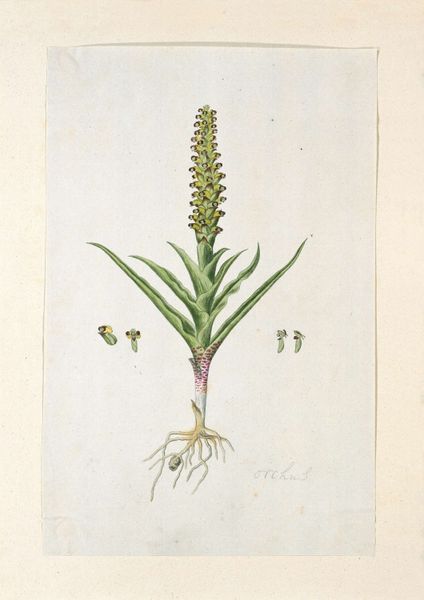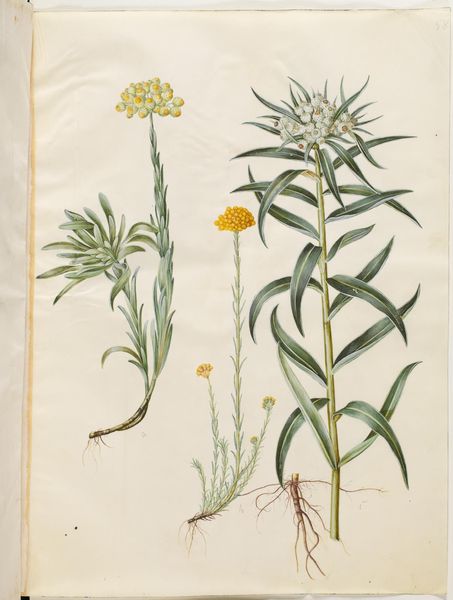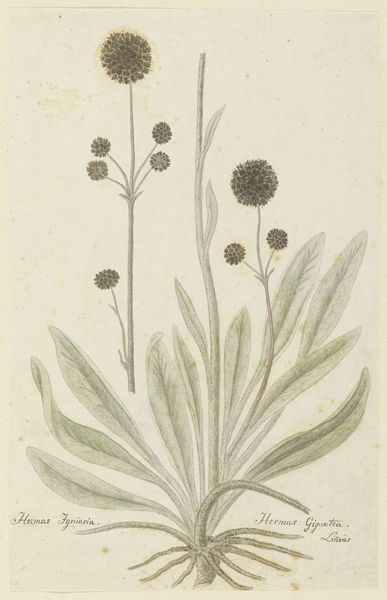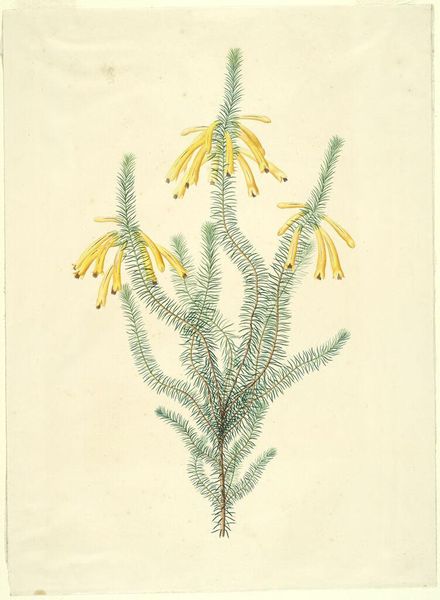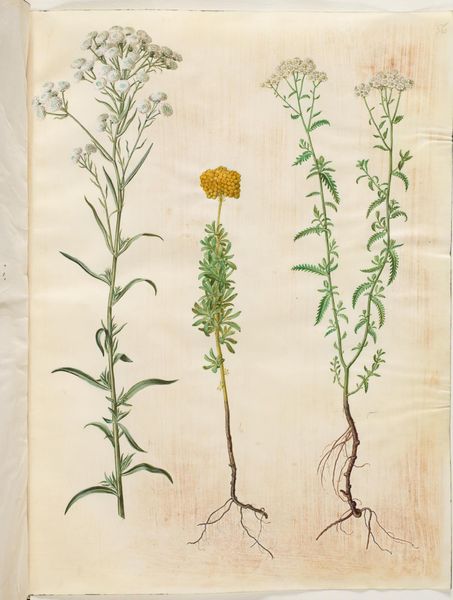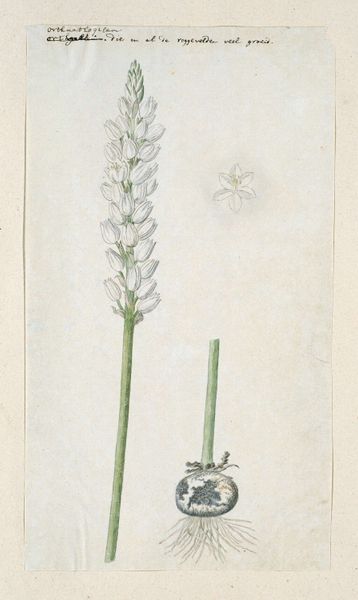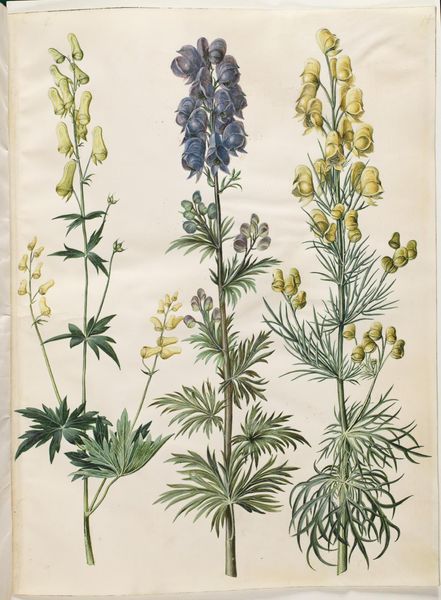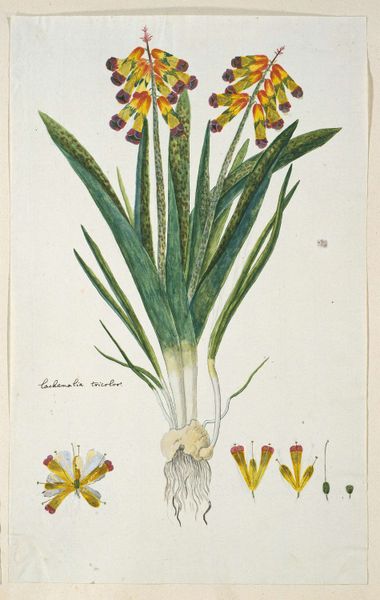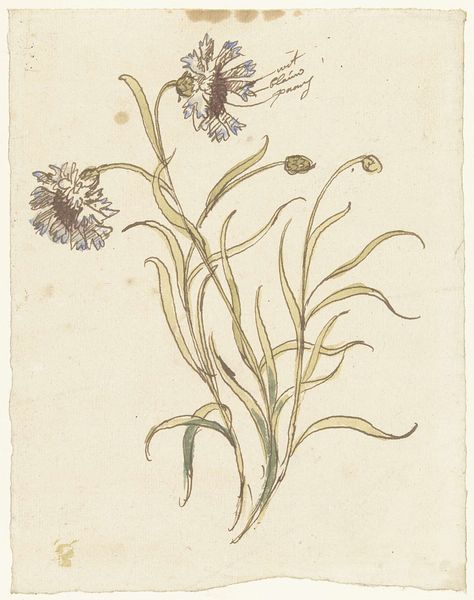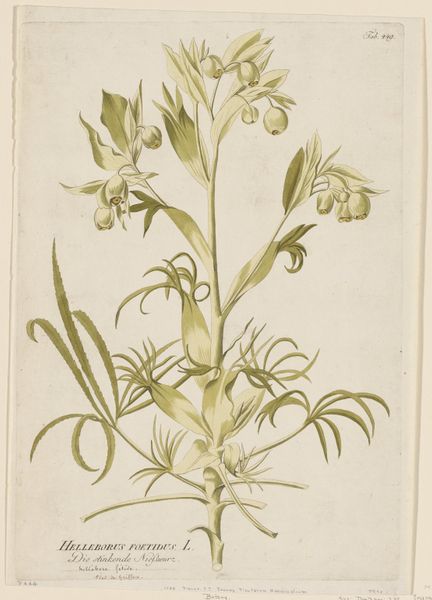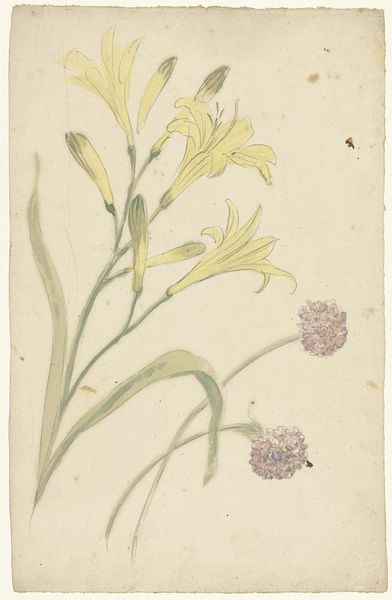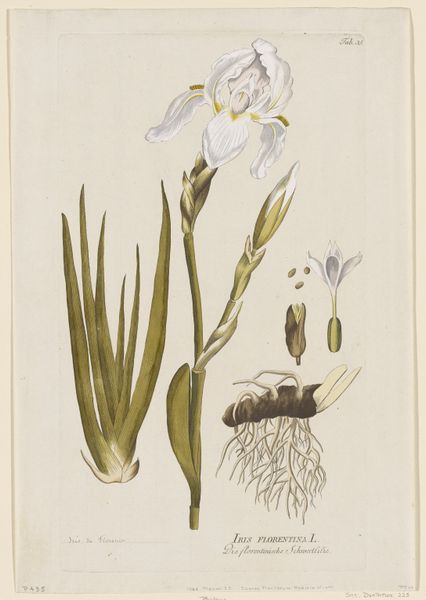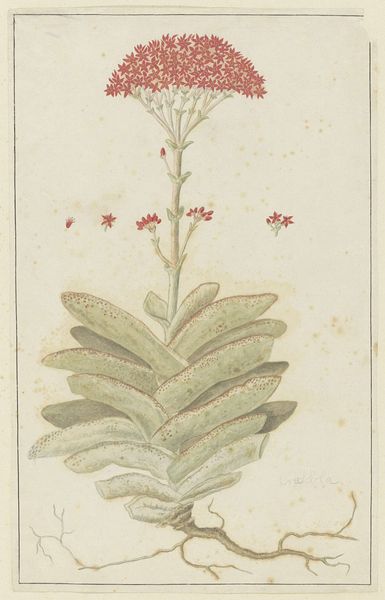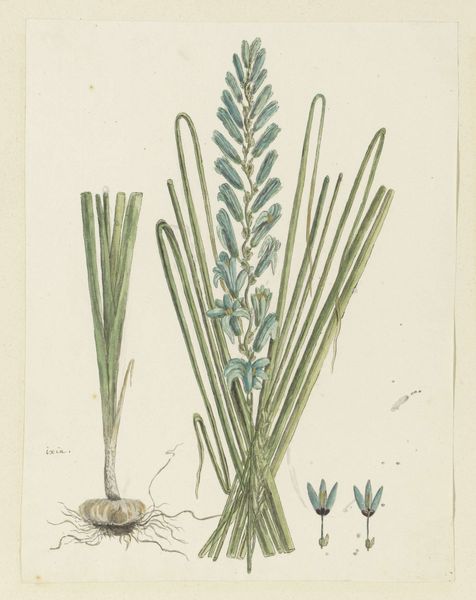
drawing, plein-air, watercolor
#
drawing
#
water colours
#
plein-air
#
landscape
#
watercolor
#
watercolour illustration
#
academic-art
#
watercolor
#
realism
Dimensions: height 660 mm, width 480 mm, height 411 mm, width 252 mm, height mm, width mm
Copyright: Rijks Museum: Open Domain
Curator: Let’s discuss this botanical drawing by Robert Jacob Gordon, entitled *Tylecodon cacalioides*. The watercolour piece was likely completed between 1777 and 1786. What strikes you upon first viewing? Editor: It has a fragile, ethereal quality to it. The textures seem built from very light layers. You can see the work, the process, which in some botanical art can be obscured by accuracy. Curator: Absolutely. The academic art style places this work within the historical context of exploration and scientific documentation. The plant is methodically illustrated, capturing its morphological characteristics, including its root system and various flowering stages. Given the historical moment of this work, the legacy of colonialism is a central concern. Gordon worked as a military commander for the Dutch East India Company. His botanical work emerged out of his role in the violent exploitation of southern Africa. Editor: That makes me consider the labor and materials used. The paper itself, where was it sourced? And the pigments – the vibrant yellows and greens, and how their extraction might tie into exploitative practices. Curator: A critical perspective considers the indigenous knowledge utilized, and most often erased, in these colonial botanical endeavors. What can this representation tell us about the ecological and cultural landscape that Gordon encountered, and how does it reflect, or perhaps distort, the reality of the *Tylecodon cacalioides* in its natural environment? It can also be insightful to think about gender roles. As this form of documentation and study was overwhelmingly done by men, there are layers to peel away and consider. Editor: It is also worth noting the absence of human presence. This lack invites reflection on the colonial project of representing nature as separate from humanity. How did people of the region view the materials presented here? It reframes the work as an object and document deeply embedded in unequal relations of extraction and representation. Curator: Examining this artwork necessitates looking at the power dynamics inherent in the act of botanical illustration during this era. We need to continually assess and dismantle the authority this piece holds to truly interpret the implications of this work in its historical and present context. Editor: Absolutely. Considering all the steps—from gathering materials to artistic labor—reveals layers of social and economic relations shaping this image. Curator: Indeed, acknowledging the complex historical web illuminates the continued significance of such pieces. Editor: For me, thinking about materiality, labor and class, opens up new ways of critiquing traditional notions of nature in art history.
Comments
No comments
Be the first to comment and join the conversation on the ultimate creative platform.
